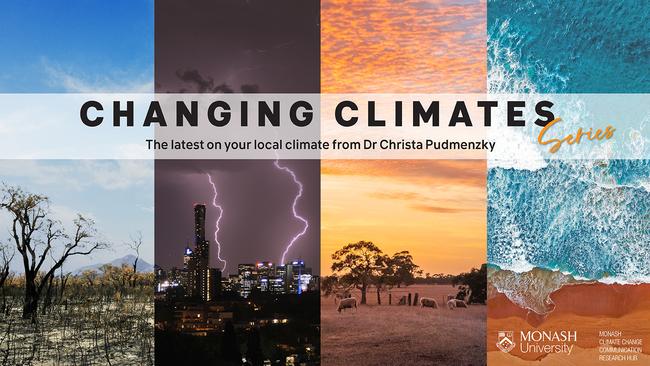Struggling species in the land Down Under
A healthy climate and booming biodiversity go hand-in-hand. The host of Gladstone's Changing Climates series, Dr Christa Pudmenzky, explains why.

Hyperlocal
Don't miss out on the headlines from Hyperlocal. Followed categories will be added to My News.
Many of us identify the sharp, slightly medicinal aroma of eucalyptus, the cackle of a kookaburra, white sandy beaches, and expansive outback as uniquely Australian and a symbol of home.
Whether you live in a cityscape apartment, out in the 'burbs, or on a farm, you're almost guaranteed to be able to see, smell, or hear nature.
The land down under is home to more than a million species of plants and animals, many of which are found nowhere else in the world.
In fact, Australia is one of 17 countries described as 'megadiverse', meaning we live in one of the most biologically rich places in the world.
This extraordinary mix of species is known as biodiversity, and supports thriving ecosystems that give us clean air, food and water.
Unfortunately, we're losing biodiversity at a cracking pace.
In Australia alone there has been one extinction of a plant or animal every two years since the 1800s.
And, in September this year almost 50 new species, including crayfish, butterflies and geckos were added to our threatened species list.
If we zoom in on Queensland and take a look at how our threatened species are faring, we see a rapid 48 per cent decline in populations in just three and a half decades.

This trend isn't showing any signs of slowing, with the World Economic Forum declaring biodiversity loss to be the third most severe threat humanity will face over the next ten years.
So, what's driving away our special species?
One of the key drivers of biodiversity loss is climate change.
This is because climate change brings with it more extreme weather events, rising temperatures and changes in rainfall, just to name a few.
And these erratic conditions make it tricky for species to adapt and survive.
Even a single event like the 2019-20 Black Summer bushfires are thought to have increased the number of threatened species in the area by 14 per cent.
However, the implications for Aussies are far greater than just fewer critters calling our wilderness home.
For example, biodiversity loss may limit future discoveries of disease treatments, while the loss of our buzzing pollinators threatens crop production and our ability to get tasty treats from farm to table.
Healthy, biodiverse ecosystems are also critical for purifying and protecting our precious water supplies by stopping soil erosion and trapping pollutants.
Why Aussies care about biodiversity
Most Aussies feel a deep sense of connection to the environment, anchored in childhood experiences of running amok and exploring the great outdoors.
This sentiment was echoed in a report released by the Biodiversity Council earlier this year.
The report found over 80 per cent of people were concerned about biodiversity and thought it important to look after nature, and almost all respondents want more action to stop extinctions.
However, many didn't realise the full extent of biodiversity loss, with 60 per cent believing the Australian environment is in a "good" or "very good" state.
This shows that although awareness is limited, Aussies value nature and recognise its importance in our lives.
What can we do to keep nature happy and healthy?
A stable climate and thriving biodiversity depend on each other like bees and flowers.
By looking after species and their surrounding ecosystems, we protect important carbon sinks – such as forests and oceans – that help soak up emissions and limit warming.
Looking at solutions a little closer to home, there are lots of other things we can do to give biodiversity a helping hand.
Finding out which flora, fruits and veggies are native to your area and planting a variety in your backyard is a great place to start.
Another important measure is water conservation, which allows for the release of more water into rivers and streams to keep ecosystems hydrated.
Lastly, when you're enjoying the great outdoors, stick to the paths and make sure pets are always on a lead so as not to harm our spectacular native species.
Looking after Australia's natural beauty is the best way to make sure everyone can enjoy a home among the gumtrees.
Did you know?

Want more information on how your climate is changing? Check out the last article in this series.
Dr Christa Pudmenzky is a climate scientist at the University of Southern Queensland.
This column is part of a collaboration between Monash University and News Corp to deliver hyperlocal weather and climate information.

